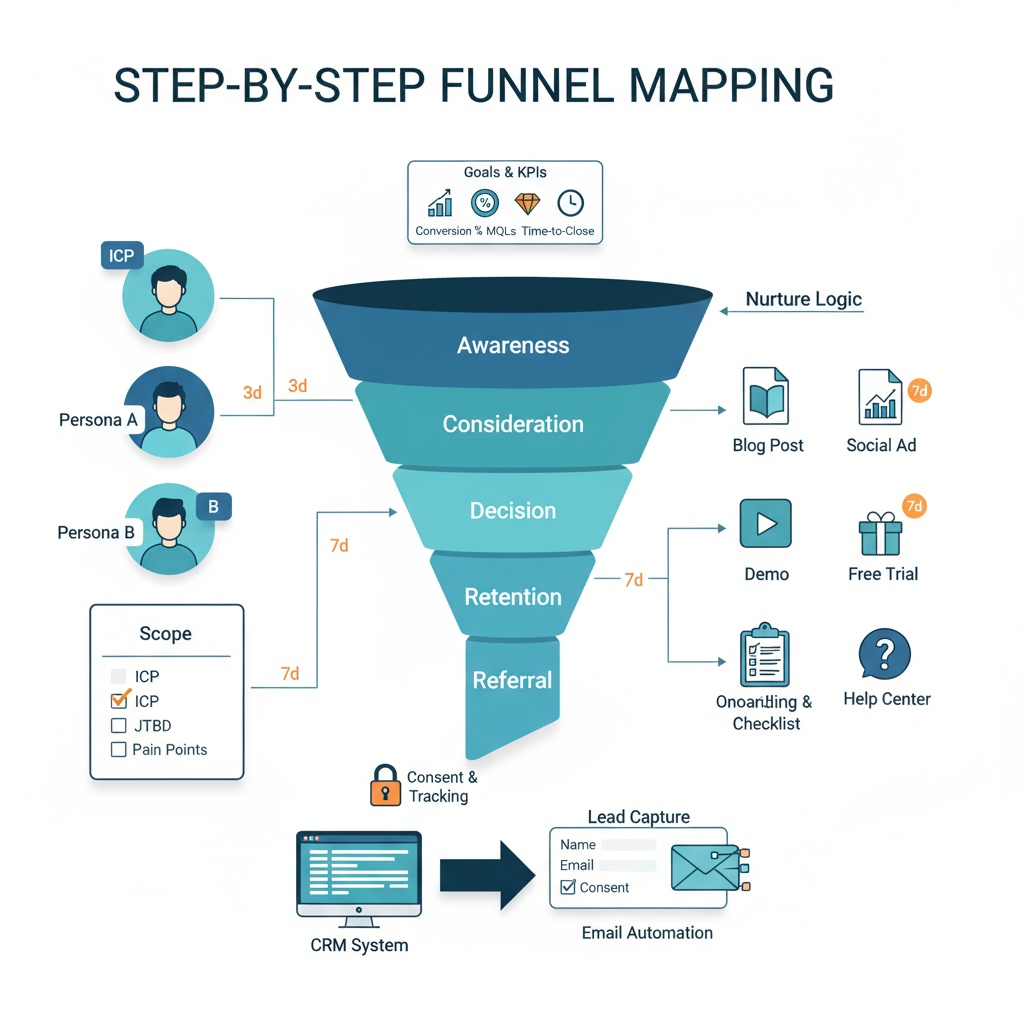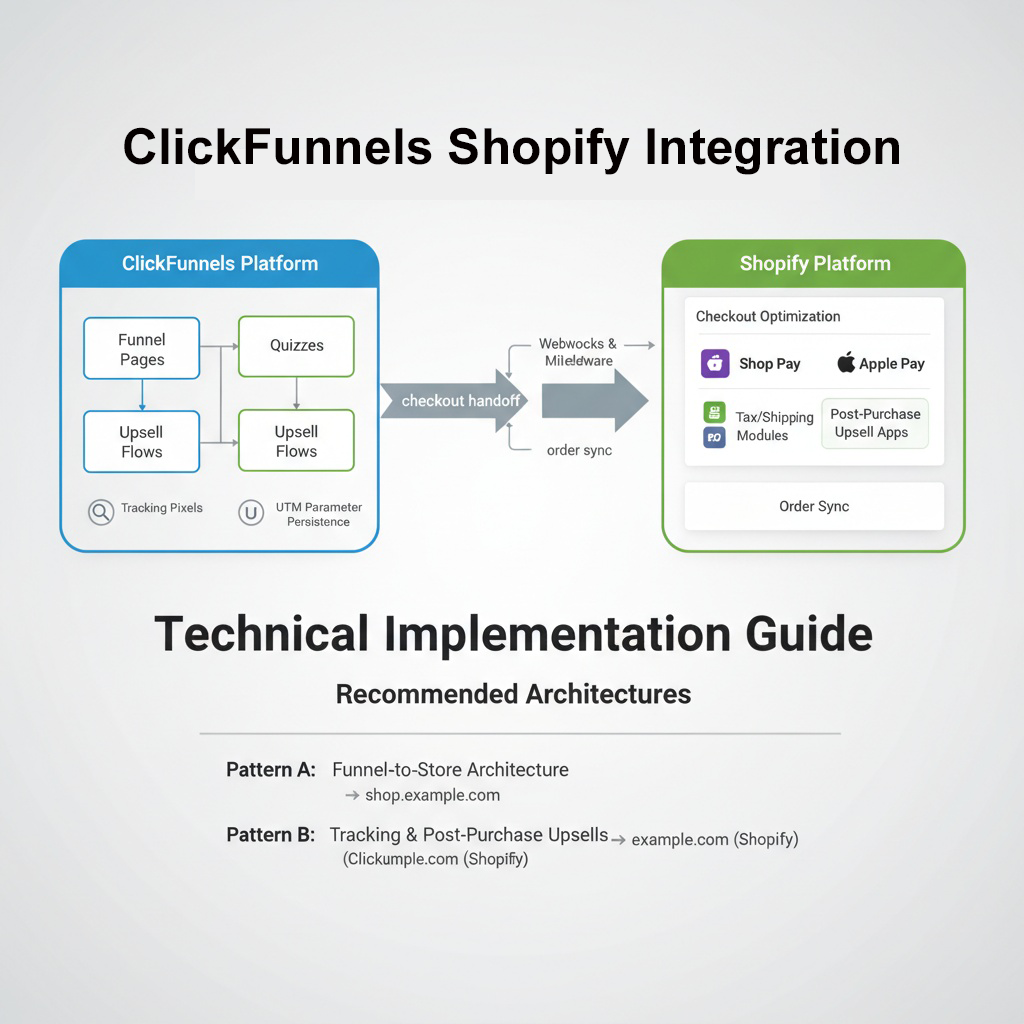SEO Training Udemy: How to choose the best SEO course online and build a hands-on roadmap
Finding the best SEO course online on Udemy can feel like drinking from a firehose. The “best” isn’t a single class—it’s the course (or sequence of courses) that matches your goals, experience, and need for practical, real-world execution.
This guide gives you a clear, evidence-based framework to evaluate Udemy SEO classes by syllabus depth, instructor credibility, update frequency, and project-based learning—then stitch them into a beginner-to-advanced path using only Udemy content.
You’ll learn how to filter the noise, verify modern coverage (GA4, E-E-A-T, Helpful Content/Core updates, AI workflows, schema, Core Web Vitals), and build a portfolio through audits, briefs, technical fixes, and dashboards.
Best seo course online vs. best course for seo: define “best” for your goals
- Align to your stage: beginner, intermediate, or specialist (technical, local, ecommerce, international)
- Choose by outcome: freelance services, SMB growth, in-house role, or career switch
- Fit your constraints: time, budget, preferred pace, and practice intensity
How to shortlist the best seo training courses on Udemy
Use platform filters:
- Rating 4.6+; Students 5,000–10,000+; Updated within 12 months
- Assignments and downloadable resources included
- Confirm modern coverage:
- GA4 (not UA), E-E-A-T, Helpful Content/Core updates, AI-assisted SEO, schema markup, CWV
Compare syllabi against a competency map:
- Foundations, keyword research and SERP intent, on-page SEO, technical SEO, content strategy, link building/digital PR, local SEO, analytics/reporting, specialization, governance/SOPs
- Vet instructor quality:
- Proven experience, clear teaching, active Q&A, transparent update logs
What this seo training course guide delivers
- A scoring rubric to compare courses by syllabus depth, recency, projects, instructor reputation, and social proof
- A table template to compare the best seo training courses side by side
- A Udemy-only learning path from beginner to advanced with project milestones and a capstone
- Templates for audits, keyword maps, content briefs, outreach, and GA4/GSC/Looker Studio dashboards
Use this playbook to turn Udemy into a structured, hands-on learning system—so every lesson ladders up to skills you can prove and ship.
What “best” really means when choosing seo training udemy
The best SEO course online is not a single trophy course. It is the course or sequence that matches your starting point, the outcomes you need, and how you like to learn on a 100 percent online platform like Udemy. Treat “best” as a fit test across depth, recency, and hands-on practice rather than a popularity contest.
Think in terms of alignment. Are you a beginner who needs a structured foundation, or a practitioner targeting local SEO or ecommerce performance? Do you want a self-paced sprint for the next 6 weeks, or a slower evenings-only cadence? By anchoring the decision to your constraints and goals, you avoid generic recommendations and surface courses that actually move the needle.
Match your stage, goals, and format before you browse
- If you are new to SEO, prioritize one comprehensive seo training course that introduces research, on-page, technical basics, and reporting with real assignments.
- If you are upskilling for a role, pick the best course for SEO tied to your focus: local SEO for service businesses, ecommerce SEO for catalogs and faceted navigation, or international SEO for hreflang and multi-language content.
- If you are freelancing, include modules on audits, proposals, and client reporting. Look for lesson titles that mention deliverables and templates.
- If you prefer shorter bursts, stack micro-courses by topic with projects you can complete on a test site, then combine them into a portfolio.
To calibrate expectations against the broader market, skim curated overviews of the best SEO training courses from respected sources like CXL’s in-depth comparisons, Backlinko’s roundup of courses that actually teach you SEO, and The CMO’s list of options for 2025. These references help you spot the baseline of modern coverage and production quality.
Filter seo training udemy listings to a high-quality shortlist
Start with precise searches such as “technical SEO,” “local SEO,” “GA4 for SEO,” or “link building.” Then use Udemy’s filters to cut noise and surface candidates worth deeper evaluation.

Use these minimums when you scan results:
- Rating 4.6 or higher and a steady stream of recent reviews
- At least 5,000 to 10,000 learners for broad courses, or clear expert social proof for niche topics
- Updated within the last 12 months, ideally with a visible change log
- Assignments, downloadable resources, and quizzes listed on the course page
A quick reality check helps. Open three tabs and compare the top sections: does each syllabus show GA4, E-E-A-T, Core Web Vitals, and schema? Are projects embedded or just “watch and learn”? If the course marketing avoids specifics, move on. For visual cues on how to evaluate listings quickly, the video guide on finding the best SEO courses on Udemy is a solid reference.
Confirm modern coverage and build your “best SEO course online” competency map
A modern SEO course addresses how search works today. That includes GA4 instead of Universal Analytics, E-E-A-T as a quality framework, Google’s Helpful Content and Core updates, schema markup strategies, Core Web Vitals, and practical AI workflows. If the course never mentions these, its tactics will lag.
Use a competency map to compare syllabi module by module. This lets you verify coverage and depth rather than trusting a headline. It also reveals where you may need a second course to close gaps, especially in technical SEO or analytics.
Competency checklist and what to look for:
| Area | What to look for in a Udemy syllabus | How you verify quickly |
|---|---|---|
| Foundations | Crawling vs indexing, ranking factors, E-E-A-T, SERP features | Module names mention E-E-A-T and SERP analysis |
| Research | Keyword research, search intent, topical clusters, SERP deconstruction | Live demos in tools, worksheets, or checklists |
| On-page | Titles, internal links, content briefs, structured data | Examples of briefs and schema walkthroughs |
| Technical | Site architecture, canonicalization, robots, sitemaps, JavaScript SEO, Core Web Vitals | Screaming Frog or Lighthouse demos, real audits |
| Content strategy | Hubs, calendars, optimization, AI-assisted outlines | Templates and a start-to-finish content example |
| Off-page | Link earning, digital PR, outreach, toxic link handling | Outreach email samples, vetting link quality |
| Local SEO | Google Business Profile, NAP, citations, local landing pages, reviews | GBP optimization steps and citation plans |
| Analytics | GA4, Search Console, Looker Studio dashboards, KPI mapping | Dashboard build lessons and UTM/reporting |
| Specialized | Ecommerce SEO, internationalization, migrations, log-file analysis | Case studies or site demos with these scenarios |
| Governance | SOPs, QA, stakeholder communication | Downloadable SOPs and QA checklists |
If you plan to incorporate AI in research or content optimization, connect what you learn with our practical guide on machine learning in SEO for workflow ideas you can adapt.
Compare seo training course syllabi methodically
Create a simple spreadsheet and map each course module to your competency checklist. This turns vague marketing into a side-by-side comparison you can trust.
Follow this step-by-step:
- Export the syllabus outline or copy it into your sheet.
- Tag each lesson to one competency area. Count depth by the number of lessons and practice assets per area.
- Highlight recency signals. Look for GA4, 2023 to 2025 algorithm updates, E-E-A-T, and Core Web Vitals. Note dated mentions of Universal Analytics.
- Mark practice assets: audits, templates, datasets, sandbox site walkthroughs.
- Add a “teaching format” note: live site demos and audits outperform slide-only lectures.
Red flags to eliminate quickly:
- Guaranteed rankings or traffic promises
- No mention of GA4, Helpful Content, or Core updates
- Link building framed as pure quantity over relevance and quality
- No assignments or projects, only lecture videos
- Outdated terminology, such as PageSpeed without CWV, or UA-only analytics
If you want a broader framework for course evaluation beyond Udemy, use our guide on how to choose the right SEO training online for a structured checklist that complements this process.
Vet instructor quality before you enroll
Instructor quality is the hidden multiplier. Strong instructors bring real cases, maintain their courses, and answer questions with context. Weak instructors read slides and disappear from the Q&A.
Use this four-part check:
- Background: Review LinkedIn and portfolios for client work, speaking, or published case studies.
- Teaching clarity: Watch the previews for how they explain crawling, intent, and technical audits. Look for screen-share demos and clean walkthroughs.
- Responsiveness: Scan the Q&A tab to see reply speed and substance. Recent, specific answers are a positive signal.
- Update cadence: Check the “last updated” date and any version notes for GA4 migration, new site audit modules, or algorithm update debriefs.
Instructor signals and how to validate:
| Signal | Why it matters | What good looks like |
|---|---|---|
| Proven practice | Real-world relevance | Case studies, client logos, or audited sites shown |
| Clear pedagogy | Faster learning and retention | Stepwise demos, checklists, examples, and summaries |
| Active Q&A | Support when you get stuck | Replies within days, cites resources, gives next steps |
| Frequent updates | Relevance to current SEO | GA4 modules, Core update analyses, revised templates |
When you compare options, a short YouTube walkthrough on finding the best SEO courses on Udemy can help you spot presentation quality and structure before you buy. To contextualize your findings, pair them with independent perspectives from Backlinko or CXL to gauge whether a course’s claims match industry expectations. For alternative curated views, review Landingi’s picks and The CMO’s 2025 upskilling recommendations.
Ensure your setup supports hands-on learning from day one
Even the best seo training courses fall flat without implementation. Prepare a simple environment so every lesson turns into a deliverable.
- Spin up a sandbox site or use a small real project where you have edit access.
- Install and connect GA4 and Search Console. If you need a refresher, our free SEO training roadmap includes step-by-step starter tasks for both.
- Add basic tools: Screaming Frog free edition, Google Sheets, Lighthouse, and Looker Studio.
- If you use WordPress, configure Yoast with proper schema and sitemaps following our Yoast SEO training guide for smoother on-page practice.
- For research and content, create templates for keyword maps, content briefs, and internal linking. Our SEO copywriting training provides practical frameworks you can adapt.
Time constraints and information overload are common pinch points. Block focused 60 to 90 minute sessions, pick one competency at a time, and convert assignments into portfolio assets. If you are budget conscious, supplement with free resources and only purchase targeted modules where gaps remain.
Bring it together without overcommitting
At this point, you have a working definition of “best,” a filtered list of candidates, a competency map to compare syllabi, and a process for vetting instructors. You also have a ready environment to practice as you learn. In the next section, we will take those shortlisted seo training udemy courses, apply a rubric to weigh syllabus depth, recency, practice assets, instructor quality, and social proof, then assemble a focused Udemy-only path that moves from beginner foundations to advanced execution.
Advanced Rubric: From Star Ratings to Evidence-Based Scoring
Move beyond superficial ratings and build a quantified rubric that captures course quality, currency, and practicality. Use a 100-point system to score your shortlist across six dimensions, then set pass thresholds to keep your stack tight.
Scoring dimensions and how to measure them:
Syllabus depth and alignment, 25 points
Criteria: coverage across strategy, research, on-page, technical, content ops, off-page, local, analytics, and one specialization. Look for live demos and real audits, not slide-only walkthroughs.
Measurement: map modules to a competency grid and count the depth signals per area. Award full points only if most competencies include a project or case study.
Recency and update cadence, 20 points
Criteria: last update within 6 to 12 months, clear change logs, modules that reflect GA4, Core updates, and AI-assisted workflows.
Measurement: check version notes and lecture timestamps. Add points if monthly or quarterly updates are documented.
Practical assignments and project fidelity, 20 points
Criteria: tangible outputs like site audits, content briefs, outreach plans, dashboards, and code-free technical checks.
Measurement: tally assignments that require implementation on a real or sandbox site, and whether templates are provided.
Instructor credibility and engagement, 20 points
Criteria: industry background, shipped case studies, Q&A response quality, and clarity in trial lectures.
Measurement: sample Q&A threads for specificity, review instructor’s LinkedIn and talks, and watch previews for depth and clarity.
Social proof quality, 10 points
Criteria: recent reviews, specificity of outcomes, student projects cited in feedback.
Measurement: weight newer reviews higher and prioritize reviews that mention practical wins.
Accessibility and resources, 5 points
Criteria: captions, downloadable checklists, datasets, and supplemental templates.
Measurement: verify downloads in the course outline and ensure captions are complete.
Cutlines and tradeoffs:
- Keep only courses scoring 80 or higher.
- If a course scores 75 to 79 but excels in a niche you need this quarter, include it as a specialist pick.
- Disqualify any course missing GA4 coverage or ignoring 2023 to 2025 Google updates.
Compare two candidates quickly:
- Course A: strong technical SEO modules with live audits and CWV labs, monthly updates, active Q&A. Likely 85 to 92.
- Course B: polished slides, limited projects, annual updates, vague reviews. Likely 62 to 70.
If you need outside references to sanity-check quality patterns, skim the [CXL list of best SEO courses], the [Backlinko guide], and The CMO’s [upskilling roundup], then triangulate with a [YouTube walkthrough] that shows how to sift Udemy results efficiently. This is not to outsource judgment but to calibrate your rubric with wider industry signals.
A 15-Week Udemy-Only Roadmap With Deliverables and Benchmarks
This plan assumes you will select courses via the rubric above. It focuses on outputs, not hours watched, and works well for seo training udemy learners building a practical portfolio.
Weeks 1 to 2, foundations with measurable outputs
- Topics: keyword research, search intent analysis, SERP deconstruction, on-page fundamentals.
- Deliverables: a keyword universe spreadsheet segmented by intent, three content briefs, and before-after on-page changes for two URLs.
- Benchmarks: 100 prioritized keywords, each mapped to a page, with title and H1 variations backed by SERP proof.
Weeks 3 to 4, technical baseline and site health
- Topics: crawling and indexation checks, canonical and robots logic, sitemaps, CWV diagnostics.
- Deliverables: a 15-slide technical audit deck, CWV improvement plan, and a prioritized backlog with story points.
- Benchmarks: reduce critical technical issues by 80 percent on a sandbox or client site and improve LCP and CLS in lab tests.
Weeks 5 to 6, content systems and internal linking
- Topics: topical clustering, hub and spoke architecture, internal link graph, schema patterns.
- Deliverables: a content hub blueprint, schema implementation plan, and an internal linking map for 20 priority pages.
- Benchmarks: draft two long-form briefs that incorporate E-E-A-T signals and structured data opportunities.
Week 7, authority building and outreach fundamentals
- Topics: link earning, digital PR hooks, competitor gap analysis.
- Deliverables: an outreach list with 40 prospects, email templates, and a prospect scoring matrix.
- Benchmarks: at least five positive replies or relationship-building steps logged.

Weeks 8 to 9, analytics that influence decisions
- Topics: GA4 measurement design for SEO, GSC segmentation, Looker Studio dashboards.
- Deliverables: one SEO dashboard segmented by device, intent cluster, and page type, with annotations for content releases and algorithm events.
- Benchmarks: SLA to publish a weekly narrative update that links movements to changes you made, not just charts.
Weeks 10 to 11, specialization block
- Pick one lane and choose a targeted seo training course from your shortlist.
- Local SEO: GBP optimization, NAP audit, location page templates.
- Ecommerce: faceted navigation strategy, product schema, pagination logic.
- International: hreflang governance, ccTLD vs subfolder decision memo.
- JavaScript SEO: prerender tests, hydration timing diagnostics.
- Deliverables: a specialist audit and a one-page governance SOP.
- Benchmarks: one measurable lift, such as increasing discovery impressions for priority entities or improving crawl efficiency.
Week 12, advanced analytics and experimentation
- Topics: KPI tree for SEO, counterfactual reasoning, experiment design without full A/B infra.
- Deliverables: a hypothesis backlog tied to cost and expected impact, and a test plan for two pages.
- Benchmarks: one uplift attributed to changes, even if directional.
Weeks 13 to 14, integration and stakeholder communication
- Topics: packaging insights, telling a story with data, risk logs.
- Deliverables: a strategy narrative that connects audits, content plans, and analytics into a single operating model, plus a maintenance SOP.
Week 15, capstone
- Project: end-to-end implementation on a sandbox or real site, from audit to dashboard to reporting cadence.
- Deliverables: portfolio case study with baseline, actions, outcomes, and next steps.
Niche Tracks That Elevate Your Standing
These specialist paths complement the best seo training courses you curate on Udemy.
- News and publisher SEO: evergreen vs temporal content model, Google News eligibility, recirculation widgets. Deliverables include a crawl budget memo and a headline testing matrix.
- SaaS and B2B SEO: demand unit mapping, bottom-up topic clustering around use cases, multi-touch reporting. Deliverables include a KPI tree aligned to pipeline stages.
- Programmatic SEO: template strategy, deduplication rules, and canonical governance. Deliverables include a template spec that balances scale and uniqueness.
- Image and video SEO: thumbnails, transcripts, chapters, and smart captions. Deliverables include a video optimization SOP and a schema library.
- App store and web-to-app SEO: deferred deep links, campaign tagging, and bridge pages for intent. Deliverables include a diagram of user flows and measurement tags.
For niche validation and course discovery, cross-reference the [Landingi overview] and the [CXL list of best SEO courses] to ensure your picks reflect current tactics.
Portfolio-Grade Outputs and the Analytics Spine
Treat every assignment as a professional artifact. Package the following:
- Audits that show prioritization logic, not just issue lists. Include a scoring formula for effort vs impact.
- Content briefs with SERP reverse-engineering, entity coverage, and internal links planned at outline stage.
- Dashboards that segment by page type, intent, and geography. Pull GA4 and GSC into Looker Studio, add annotations for releases and algorithm events, and include a velocity widget that tracks pages shipped per week.
- Decision memos that document tradeoffs, like subfolder vs subdomain or canonical rules for parameters.
If you started with a free path, integrate the outputs from this [beginner roadmap] to maintain continuity and show growth.
Maintenance Loops and Update Discipline
A strong seo training course gives you mechanics, but the maintenance habits keep skills sharp.
- Monthly: refresh the dashboard, review query shifts, and prune content that fails to meet intent. Revisit one course module where your metrics lag.
- Quarterly: rescore your Udemy stack using the rubric, drop laggards, and add one specialist course that fills a skill gap. Use the [Backlinko guide] and The CMO’s [upskilling roundup] to spot emerging coverage areas.
- Semiannual: rebuild your KPI tree, rotate a new experimentation focus, and re-audit your CWV using both lab and field data.
When Google’s landscape shifts, revisit your analytics and content governance. Annotate updates in your dashboard and adjust SOPs within one week to keep your playbook current.
Counterpoints and How to Balance Your Stack
Udemy-only learning is flexible and cost effective, yet some learners benefit from accountability and live feedback. If you need that structure, blend your Udemy picks with cohort touchpoints or peer reviews while keeping the core roadmap intact. If you want a more formal comparison of formats, see our guide to [choosing the right SEO training online] for tradeoffs between self-paced and cohort options.
On the other side, avoid treating any single pick as the best course for SEO in all contexts. Stack two broad courses with complementary strengths, then add one niche course per quarter. This layered approach outperforms the hunt for the best seo course online as a singular answer.
Strategic Add-ons for Broader Impact
- Tighten your writing craft with this practical [SEO copywriting training] to turn briefs into pages that rank and convert.
- Integrate data-driven tactics from our guide on [machine learning in SEO] to scale keyword clustering, internal linking, and content refresh targeting.
- If your site runs on WordPress, streamline implementation with our [Yoast SEO training] that covers schema, sitemaps, and GSC connections.
- Round out your acquisition skillset with [Search Engine Marketing training] to align paid and organic insights for smarter testing.
Use the rubric to select the best seo training courses for each phase, keep a living backlog of deliverables, and let your dashboards surface what to learn next.
Conclusion
Ultimately, there is no single best seo course online. The evidence shows the right choice is the one aligned to your goals, skill level, and timeline—validated by recency and real-world application. With this framework, seo training udemy becomes a deliberate decision, not a guess.
Define success, apply strict filters for quality, and confirm modern coverage across GA4, E-E-A-T, Core updates, schema, Core Web Vitals, and AI workflows. Map every syllabus to the competency checklist, vet instructor credibility and responsiveness, and score with the rubric. That’s how you separate a generic seo training course from the best seo training courses.
Build a sequenced learning path—foundations to specialization—anchored by hands-on projects, audits, dashboards, and a capstone that proves impact. Measure progress with GA4 and GSC, package deliverables into a portfolio, and evolve your stack as updates ship. This is how you turn knowledge into outcomes.
Avoid the traps: chasing hype, accepting outdated curricula, or “watching” without doing. Prioritize practice, update cadence, and instructor accountability. With disciplined evaluation and project-based execution, you lock in durable SEO capability.
In conclusion, the path is clear: create your rubric, shortlist three high-quality options, map their syllabi to your competency gaps, enroll, and schedule your first implementation sprint this week. Commit to the roadmap, ship the deliverables, and let results—not guesses—define the best course for seo for you.
Frequently Asked Questions
“Best” is not a single course—it’s a best fit for your goals, experience, and timeline. The right seo training course should match your current stage (beginner to advanced), cover modern topics like GA4 and E-E-A-T, and include hands-on projects that produce real deliverables. Use a rubric to compare options on syllabus depth, recency (updated in the last 12 months), and practical assignments to find the best course for SEO for you.
Start with hard filters: rating 4.6+, 5,000–10,000+ students, and “Last updated” within 12 months. Then scan the syllabus for GA4, Helpful Content/Core updates, Core Web Vitals, schema, and AI workflows. Finally, preview lectures to confirm clarity and check Q&A for instructor responsiveness. This yields a focused list of the best SEO training courses in under an hour.
Look for explicit modules on GA4 (not Universal Analytics), E-E-A-T and Helpful Content/Core updates, and hands-on technical SEO (CWV, schema, robots, sitemaps). Check the course “Last updated” date and the update notes; recent additions that cite 2023–2025 changes are a strong sign. If a course avoids GA4 or modern ranking systems, that’s an outdated signal.
Aim for 5–7 hours/week over 15 weeks. Weeks 1–3: foundations (keyword research, on-page SEO) with small deliverables. Weeks 4–7: technical SEO, content strategy, and outreach with a site audit and CWV improvements. Weeks 8–11: specialize (local, ecommerce, international, or JavaScript SEO). Weeks 12–13: analytics/reporting (GA4, GSC, Looker Studio). Weeks 14–15: a capstone strategy and dashboard. Build a tangible portfolio each week.
No. You can complete the full roadmap using free tools: GA4, Google Search Console, Google Sheets/Looker Studio, Screaming Frog (free crawl limits), PageSpeed Insights/Lighthouse, and Chrome DevTools. Paid tools are optional accelerators; prioritize process mastery first, then add paid tools when the ROI (time saved or results gained) is clear.
Go broad first, then narrow. Take one comprehensive seo training course to establish foundations, then stack short, specialized courses for local SEO (GBP, citations, reviews) or ecommerce SEO (faceted nav, product/schema, indexation). This T-shaped approach builds strong core skills while adding depth in one high-value niche.
Check the instructor’s industry experience (case studies, roles), preview teaching style for clarity, and review Q&A for responsiveness and problem-solving. Red flags include guaranteed rankings, black-hat tactics, “UA-only” analytics, or no mention of 2023–2025 updates. Consistent update logs and detailed assignments are strong green flags.
Certificates help show completion, but portfolios win offers. Prioritize deliverables—audits, keyword maps, content briefs, dashboards—and outcomes (traffic uplifts, CWV gains). For hiring managers and clients, demonstrable skills and documented results outweigh certificates alone. Use your capstone to package an end-to-end strategy with KPIs.
Track inputs and outcomes. Inputs: hours invested, course cost, and projects completed. Outcomes: ranking improvements for target keywords, organic traffic growth, lead/revenue uplift, and CWV score changes. A practical benchmark: aim for at least one measurable win (e.g., +30% organic visits on a target page) by week 8–10 of your roadmap.
Audit gaps first: check for missing GA4, Core updates, or technical SEO depth. Patch with targeted micro-courses and keep progressing on your project. If the fit is poor, switch early—Udemy generally offers a refund window (verify current policy). Use your evaluation rubric to pick the next course and avoid repeating the same gaps.





